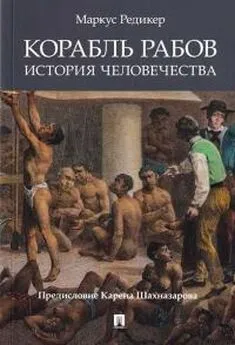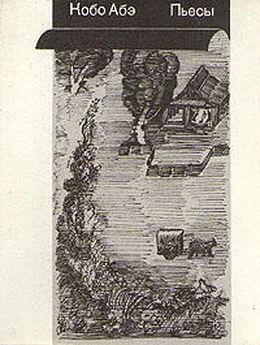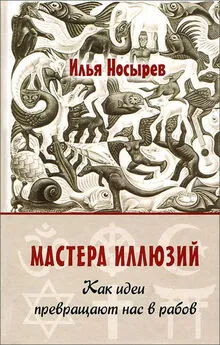Маркус Редикер - Корабль рабов
- Название:Корабль рабов
- Автор:
- Жанр:
- Издательство:Проспект
- Год:2020
- Город:Москва
- ISBN:978-5-392-33328-8
- Рейтинг:
- Избранное:Добавить в избранное
-
Отзывы:
-
Ваша оценка:
Маркус Редикер - Корабль рабов краткое содержание
Для широкого круга читателей. cite Карен Шахназаров
empty-line
6
Корабль рабов - читать онлайн бесплатно полную версию (весь текст целиком)
Интервал:
Закладка:
27. Owen N. Journal of a Slave-Dealer: A View of Some Remarkable Axedents in the Life of Nics. Owen on the Coast of Africa and America from the Year 1746 to the Year 1781, ed. Eveline Martin. Boston: Houghton Mifflin, 1930. Об одном его плавании свидетельствовал капитан Вильям; TSTD, #36152.
28. Captain William Snelgrave // A New Account of Some Parts of Guinea and the Slave Trade. London, 1734; rpt. London: Frank Cass & Co., Ltd., 1971, introduction; TSTD, #25657.
29. Interview of Henry Ellison // Substance. P. 224-225; TSTD, #17686.
30. Testimony of James Fraser, 1790 // HCSP, 71:5-58; Testimony of Alexander Falconbridge, 1790 // HCSP, 72:293-344. The quote by Burges is in: Clarkson T. History. Vol. 1. P. 318.
31. В ранних плаваниях Фрейзер не мог сохранить экипаж из одних и тех же членов команды от одного рейса к другому, но к концу 1780-х гг. две трети моряков, необычайное число, нанялись к нему снова после предыдущего рейса. A Muster Roll for the Ship Alexander, James Fraser Master from Bristol to Africa and America. P. 1777-1778; A Muster Roll for the Ship Valiant, James Fraser Master from Africa and Jamaica. P. 1777-1778; A Muster Roll for the Ship Tartar, James Fraser Master from Bristol to Africa and America. P. 1780-1781; A Muster Roll for the Ship Emilia, James Fraser Master from Dominica. P. 1783-1784; A Muster Roll for the Ship Emilia, James Fraser Master from Jamaica. P. 1784-1785; A Muster Roll for the Ship Emilia, James Fraser Master from Jamaica. P. 1785-1786; A Muster Roll for the Ship Emilia, James Fraser Master from Africa. P. 1786-1787; A Muster Roll for the Ship Emilia, James Fraser Master from Africa. P. 1787-1788; Muster Rolls, 1754-1794. Vol. 8-9, Society of Merchant Venturers Archives, Bristol Record Office; TSTD, #17888, #17895, #17902, #17920, #17933, #17952, #17967, #17990.
32. Anonymous. A Short Account of the African Slave Trade, Collected from Local Knowledge. Liverpool, 1788; Norris R. Memoirs of the Reign of Bossa Ahddee, v; Testimony of Robert Norris, 1788 // HCSP, 68:3-19; Testimony of Robert Norris, 1790 // HCSP, 69:118-120, 202-203; The Log of the Unity, 1769-1771 // Earle Family Papers, D/ EARLE/1/4, МММ; TSTD, #91567.
33. List of the Slaves that Dyed on Board the Katharine Galley, John Dagge Commander, 1728, Trading Accounts and Personal Papers of Humphry Morice. Vol. 5; Humphry Morice to William Clinch, September 13, 1722, M7/7; Humphry Morice to Captain William Boyle, May 11,1724, M7/10. Humphry Morice Papers, Bank of England Archives, London; TSTD, #76558.
В этой главе я в долгу перед авторами: Rawley J. A. Humphry Morice: Foremost London Slave Merchant of his Time // London: Metropolis of the Slave Trade. Columbia and London: University of Missouri Press, 2003. P. 40-56. См. также: Humphry Morice // Dictionary of National Biography, ed. Sidney Lee. London: Oxford University Press, 1921-22. P. 13:941.
34. Basnett, Miller, and Mill to Humphry Morice, Kingston, November 9,1722, f. 29-30, Correspondence of Humphry Morice, Miscellaneous Letters and Papers, Add. Ms. 48590B, BL.
35. Henry Laurens to Hinson Todd, April 14,1769 // G. C. Rogers, D. R. Chesnutt, P. J. Clark, eds. The Papers of Henry Laurens. Columbia: University of South Carolina Press, 1978. Vol. 6. P. 43 8 (first quotation).
См.также: Vol. 1. P. 259 (second quotation). Это исследование опирается на работы: Rawley J. A. Henry Laurens and the Atlantic Slave Trade // London: Metropolis of the Slave Trade. P. 82-97, и Taylor C. J., ed. Laurens, Henry // American National Biography Online. February 2000. http://www.anb.org/articles/01/01-00495.btml.
См. также: Littlefield D. C. Rice and Slaves: Ethnicity and the Slave Trade in Colonial South Carolina. Champaign-Urbana, 111: University of Illinois Pre^s, 1981; McMillan f.A. The Final Victims: Foreign Slave Trade to North America, 1783-1810. Columbia: University of South Carolina Press, 2004.
36. Из 1382 рабовладельческих рейсов, которые доставили 264 536 рабов в американские колонии / Соединенные Штаты между 1701 и 1810 гг., 761 кораблей доставили 151 647 человек в порты Каролины, подавляющее большинство из них в Чарльстон. Эти цифры представляют собой 55% рейсов и 57% выгруженных рабов. Расчеты на основе TSTD.
37. Об акулах на реке Гамбия см.: Park М. Travels into the Interior of Africa, Performed Under the Direction and Patronage of the African Association, in the Years 1795,1796, and 1797, ed. Kate Ferguson Marsters. Orig. publ. 1799; rpt. Durham, N.C., and London: Duke University Press, 2000. P. 28; в Сьерра-Леоне см. : Matthews J. A Voyage to the River Sierra Leone, on the Coast of Africa, containing an Account of the Trade and Productions of the Country, and of the Civil and Religious Customs and Manners of the People; in a Series of Letters to a Friend in England. London: B. White and Son, 1788. P. 50; на реке Бонни см.: Falconbridge A. An Account of the Slave Trade on the Coast of Africa. London, 1788. P. 51-52,67; о крокодилах на реке Конго см.: A Battle Between a Tiger and an Alligator; Or, wonderful instance of Providential Preservation, described in a letter from the Captain of the Davenport Guineaman // Connecticut Herald. 1808. June 28.
Больше об акулах в американских водах см.: Fowler H. W. The Marine Fishes of West Africa, Based on the Collection of the American Museum Congo Expedition, 1909-1915 // Bulletin of the American Museum of Natural History. New York: American Museum of Natural History, 1936. P. 70,1:23-92; a также Cadenat J., Blache J. Requins de Mediterranee et d’Atlantique (plus Particulièrement de la Cote Occidental d’Afrique). Paris: Editions Office de la Recherche Scientifique et Technique Outre-Mer, 1981.
О происхождении английского слова «акула» см.: Oxford English Dictionary, s.v. “Shark” // Ballads & Broadsides. 1867. P. 147, BL; а также Castro J. I. On the Origins of the Spanish Word Tiburon and the English Word ‘Shark’ // Environmental Biology of Fishes. 2002. No 65. P. 249-253.
38. Natural History of the Shark, from Dr. Goldsmith and other eminent Writers // Universal Magazine. 1778. No 43. P. 231; Robinson S. A Sailor Boy’s Experience. P. 29-32; Memoirs of Crow. P. 264; Smith W. A New Voyage to Guinea: Describing the Customs, Manners, Soil, Climate, Habits, Buildings, Education, Manual Arts, Agriculture, Trade, Employments, Languages, Ranks of Distinction, Habitations, Diversions, Marriages, and whatever else is memorable among the Inhabitants. London, 1744; rept. London: Frank Cass & Co. Ltd., 1967. P. 239.
См. также: Testimony of Fraser // HCSP, 71:24.
39. An Account of the Life. P. 40; Atkins J. A Voyage to Guinea. P. 46. Толд не сказал, был ли этот человек рабом или моряком. Похоже, что все же он был матросом, потому что он рассказал историю в контексте опасной работы, выполняемой командой. См.также: FalconbridgeA. Account of the Slave Trade. P. 67, который отметил, что африканцы хоронили своих мертвых на «расстоянии от моря, чтобы акулы не могли их учуять»
40. Falconbridge A. Account of the Slave Trade. P. 67; Smith W. A New Voyage. P. 239. См. также: Voyage to Guinea, Antego, Bay of Campeachy, Cuba, Barbadoes, etc. (1714-1723), Add Ms. 39946, BL; [John Wells], Journal of a Voyage to the Coast of Guinea, 1802, Add. Ms. 3, 871, Cambridge University Library; Ship’s Log, Vessel Unknown, 1777-1778, Royal African Company, T70/1218, NA.
41. Bosman W. A New and Accurate Description of the Coast of Guinea. London, 1705. P. 282. Жители Западной Африки имели как свои собственные обширные знания об акулах, так и свои собственные отношения с ними. Говорили, что жители Нового Калабара считают акулу священной, но соседние народы бонни и фанти не разделяли их точку зрения и поедали ее с усердием, как делали многие другие морские народы. Сторонники работорговли часто подчеркивали, что африканцы используют акул в своих собственных системах социальной дисциплины: осужденных за преступления в некоторых районах бросают в кишащие акулами воды. Те, кто пережил «суд акулы», а некоторые и вовсе выжили, были признаны невиновными в уголовных обвинениях. См.: Captain John Adams. Sketches taken during Ten Voyages to Africa, Between the Years 1786 and 1800; including Observations on the Country between Cape Palmas and the River Congo; and Cursory Remarks on the Physical and Moral Character of the Inhabitants. London, 1823; rpt. New York: Johnson Reprint Corporation, 1970. P. 67; Winterbottom T. An Account of the Native Africans in the Neighbourhood of Sierra Leone, to which is added An Account of the Present State of Medicine among them. London, 1803; London: Frank Cass & Co., 1969. P. 256; From a speech given by Mr. Shirley to legislature of Jamaica // City Gazette and Daily Advertiser. 1788, December 19; Testimony of Fraser, 1790 // HCSP, 71:18; Memoirs of Crow. P. 36,44,84.
42. Norwich Packet or, the Country Journal. 1785. April 14; Memoirs of Crow. P. 266. Сегодня в мире насчитывается около 350 видов акул, и около четверти из них можно найти в водах Западной Африки. Два самых распространенных вида акул, плававших вокруг невольничьих судов, были бычья и тигровая акулы. Оба вида распространены от Сенегала до Анголы и часто встречаются в соленых и пресноводных заливах, лагунах, реках, переходящих в воды прозрачные или мутные и неглубокие, до трех футов глубиной, их можно увидеть у причалов в гаванях, близких к человеческому жилью. Оба вида имеют неизбирательный аппетит. Джон Аткинс писал в 1735 г. об акулах, которых он встретил в реке Сьерра-Леоне: «Их прожорливость ни в чем себе не отказывает; холст, веревки, кости, покрывало и т. д.» (Atkins J. A Voyage to Guinea. Р. 46). Научившись (в некоторых случаях в течение нескольких месяцев) рассматривать корабль как источник пищи, бычьи и тигровые акулы могли совершать трансатлантические миграции. Но невольничий корабль, как большой плавучий объект, своего рода «движущийся риф» в глубоководных океанских водах, также привлекал другие виды, такие как голубая акула, шелковистая акула, короткохвостый мако и океаническая белокрылая, которые тоньше, быстрее первых, а также известны тем, что набрасываются на людей. Число хищников в американских прибрежных водах увеличивалось, так как к ним присоединялись мигрировавшие за невольничьим кораблем бычьи и тигровые акулы Западной Атлантики. Акулы следовали за кораблями как непрерывно, так и передавая корабль по эстафете. См.: Leonard J. V. Compagno, comp., Sharks of the World: An Annotated and Illustrated Catalogue of Sharks Known to Date. Rome: United Nations Development Programme, 1984. Part 2. P. 478-481, 503-506.
Читать дальшеИнтервал:
Закладка:








![Светлана Кузнецова - Дворец для рабов [litres]](/books/1066246/svetlana-kuznecova-dvorec-dlya-rabov-litres.webp)

